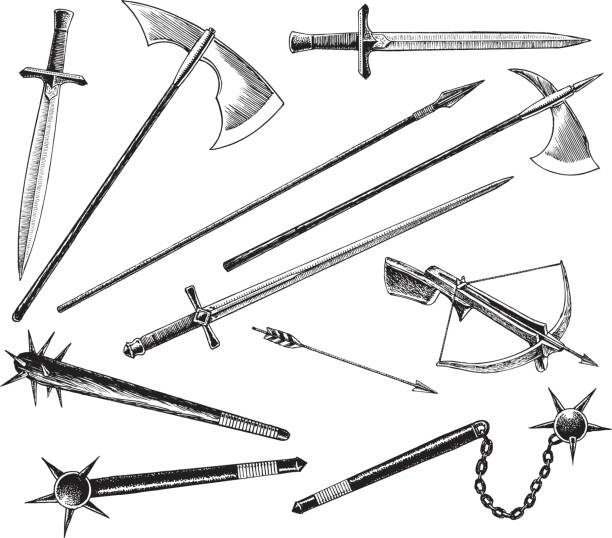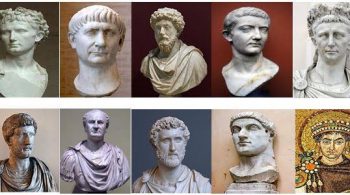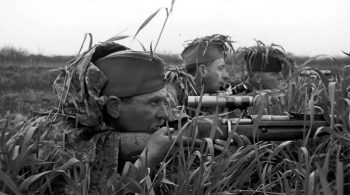Like every other thing, weapons have also developed. We all know the rich and diverse history of the medieval age, but let us discuss the various kinds of weapons of the medieval age.
Creation of Medieval Weapons
The Middle Ages of Europe were from the fifth century to the fifteenth century. That period was full of conflicts. At that time, the Germanic tribes clashed with the Roman Empire. That led to the fall of the Western Roman Empire except for Byzantium in the east. There were wars between France and England that rocked the west. In China, the fractious Five Dynasties and Ten Kingdoms destroyed the Tang Dynasty.
During this period new ways of waging wars were developing ranging from China to England and beyond. All of these weapons turned the tide of the battle, and also changed the way of fighting the war. So, let us discuss some of those path-breaking inventions.
Medieval weapons list
Battle Axes
Battle axes are type of Melee Weapon. Melee weapons are a handheld weapons. They use it in hand to hand combat. Melee weapons work essentially as an external arm. Now, let us talk about battle axes. Battle axe is a special kind of axe which they use in combat. They are different versions of utility axes. Battle axes of two types big ones and small ones. The height of battle axes varies from 1 foot to 5 feet. Axes longer than that fall into the category of polearms. Battle axes generally weigh from 0.5 kg to 3 kg.
Swords
One of the most important medieval weapons is sword. Swords are extraordinary objects. Moreover, they have both a handle to hold and also a blade to attack with. In the middle ages, knights, elites, and common soldiers used swords. Swords are not easy to yield. One needs to go through rigorous training to yield a sword. Swords feature in mythology, cosmology, and most importantly history of regions across the globe, from Northern Europe to Africa, from India to East Asia. It is not only appealing because of people’s fascination with death but also because of the wisdom, joy, and power a person feels with a sword in hand.
Read Also:Period of Salutary Neglect: Definition & Effects
For most of the middle ages, they did not change the shape of the swords. Until the 13th century when the blade becomes more narrow and sharper. This was because the armor was very heavy and it was problematic to yield the swords. Then the importance of swords reduced because more weapons came into the picture. But the significance of swords will always be there as an invincible weapon.
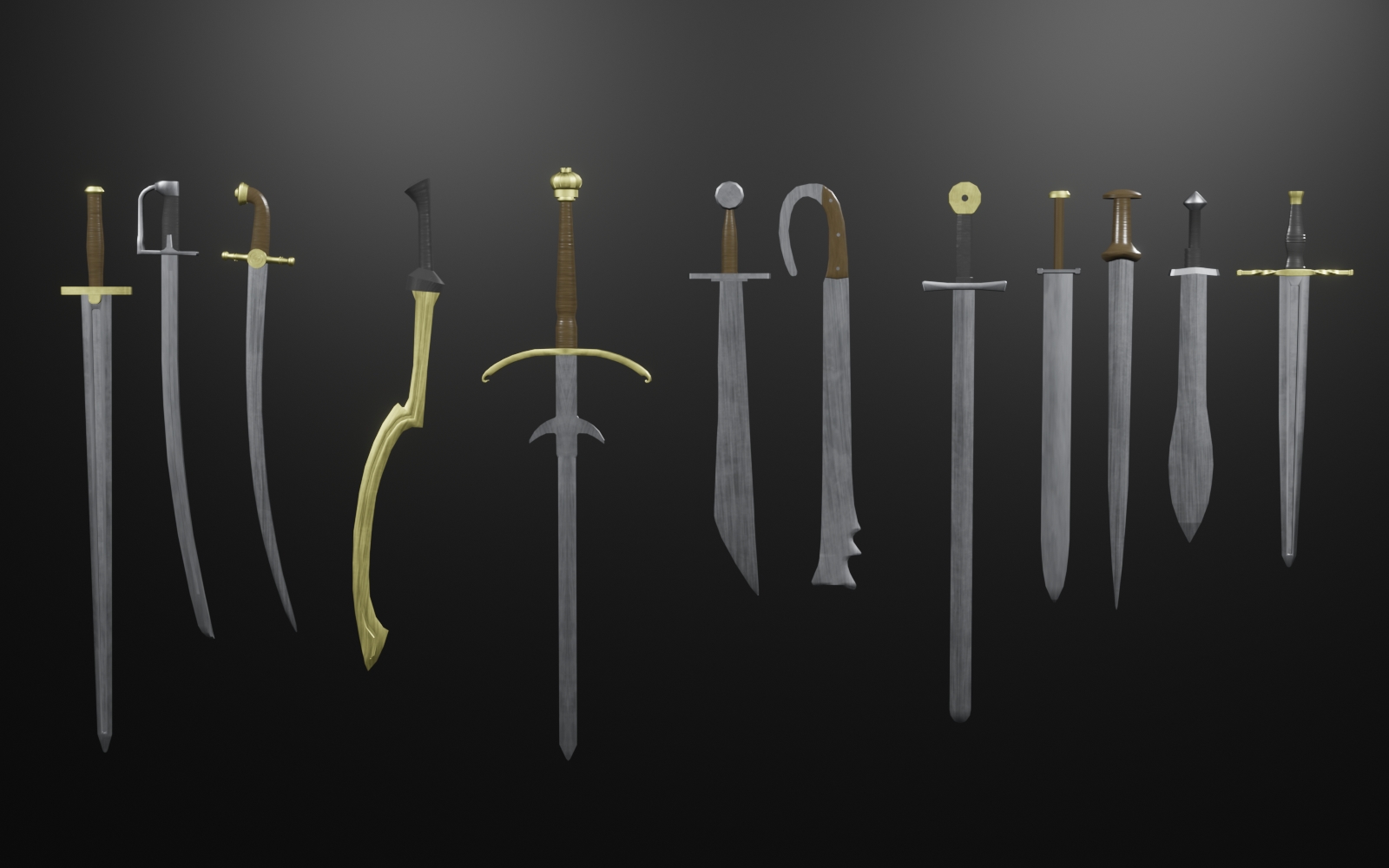
Iron tipped arrows
The history of battles in the Middle Ages involves the replacing of spears, swords, and other melee weapons. In the early fifth century, bows and arrows started becoming important weapons in the wars. And at that time the Germans started attacking the Roman Empire using iron tipped arrows. Iron tipped arrows are a special type of arrows that are with iron ingots. But these arrows would not travel as much as normal arrows. However, the impact of iron tipped arrows is more than normal arrows.
Greek Fire
Greek Fire was the secret weapon of the Byzantine Empire. It was a very much responsible factor for winning wars. Greek fire was a liquid substance and it fired through a flame thrower. It was such a secret weapon that people could not find out its procedure to make. But many people say that it was made using quicklime. Moreover, its most important factor is that they can not extinguish it using water. So, it was problematic for naval ships to tackle that.
Another, similar type of weapon was the naphtha. It had almost similar ingredients except for the fact that it is of petroleum. As in the case of Greek Fire using naphtha was advantageous to the people. Naphtha was very popular in the medieval Middle Eastern Period.
Crossbows
Crossbows were very significant in medieval weapons. It has been around for a really long time. The creation and usage of crossbows date back to the early 6th century in China. And in Europe, it was the gastraphetes of ancient Greece. However, being in existence for so long it is not present enough in history books. Then suddenly it made a comeback in the 12th century when the ordinary soldiers started using it against well equipped and armored knights. It is mostly similar to bows but it is just horizontal. It uses a mechanical thing to draw back the crossbow so it can deliver the arrows with much more force than a normal bow. Crossbows are very easy to use but they are not as accurate as normal bows.
People often criticize crossbows claiming they are not honorable enough. But by the fifteenth century, they became really popular weapons close enough to guns.
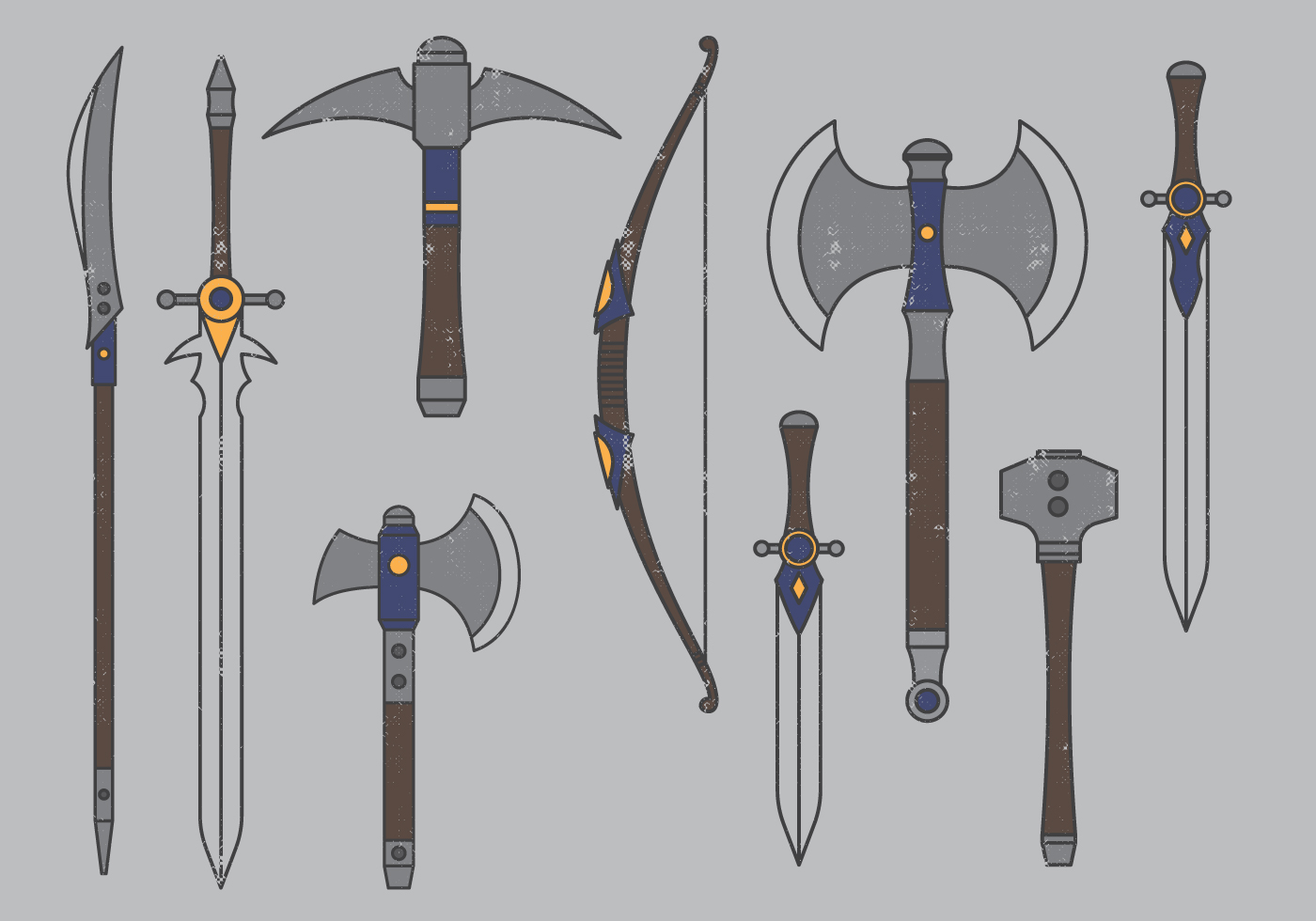
Trebuchets
Trebuchets were another important part of medieval weapons. It emerged in the 12th century, trebuchets were the first path breaking development in siege machines since ancient times. Like crossbows, it emerged in China in the early 4th century. It was a great improvement over weapons like a catapult, becoming a more lethal alternative to attack weapons. The Byzantines had adopted mangonels in the 6th century. And, later the Trebuchets had replaced them.
Now let us see how a trebuchet works. A container for materials is on one end of a pole and a sling to hold the stone on the other end. The pole is on a pivot. Then you need to pull the end on which the heavy materials are there then you need to release it. Nowadays trebuchets are simple technology but in the middle ages, it was very difficult to tackle.
Daggers
Daggers are what we call the smaller version of swords. But one should not disregard it as an important weapon of war. Their size ranges from around 30 centimeters to 50 centimeters. It can be a very lethal weapon as it is easy to hide, use, carry and, handle. An attacker can use this weapon to stab, throw or cut mostly in tight situations. By the 13th century, many versions of the dagger emerged in various regions of the world mostly in Europe. Moreover, variations were in blade design and grip design. And another variation of the dagger is the misericorde. They used it to decide the fate of the defeated soldiers.
Bows
Bows are one of the oldest and most commonly used medieval weapons. Unlike other weapons bows, everybody used bows across all sections of the people. The composition of a bow is a flexible stave of wood with a strong string. Moreover, there is various kind of bows. It mainly depends on how effectively they use the bows. Archers had played a significant role in the medieval period in winning battles. In the medieval period, the Mongols conquered a large portion of Europe and Asia by properly using horse archers and great mobility. In those days people use to say that there was no war situation in which the archers were not useful.
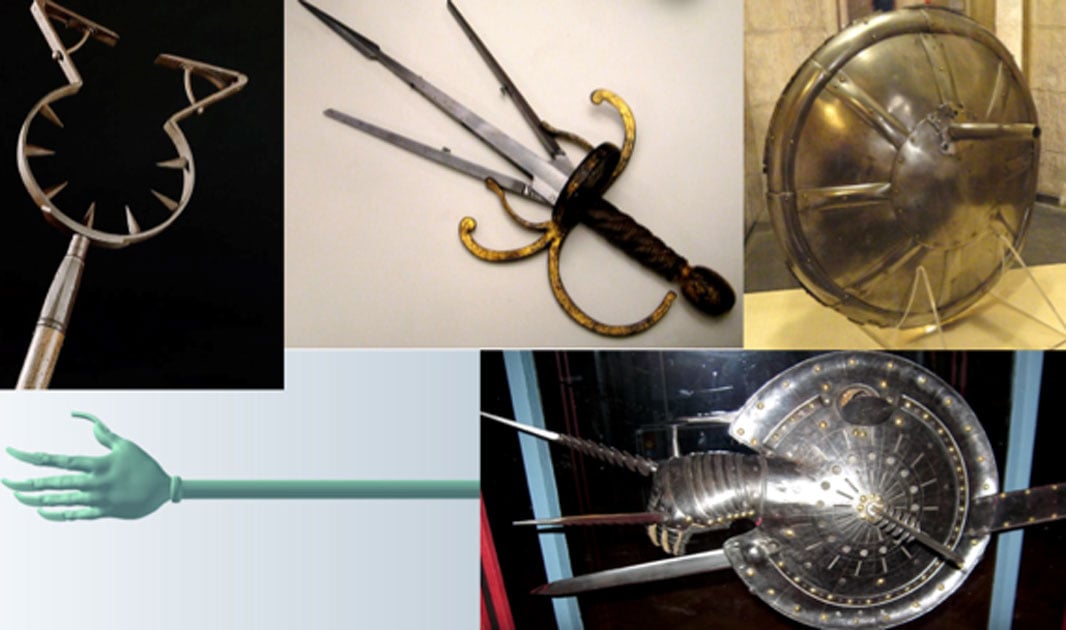
Cannons
Another integral part of medieval weapons was the cannons. In early 10th century China, there was the inception of gunpowder weapons. Then in the early 14th century, the Chinese military started using cannons, rocket weapons, and hand grenades for the first time in that period in China. After that cannons became a very integral part of invading Europe and also for the rest of the century. Moreover, cannons were important in destroying heavy cavalry charges. The use of cannons had actually started the trend of using gunpowder weapons in the wars. Cannons had also played an integral part when the French had used them to demolish the English archers in wars.
Polearms
Polearms were one of the most medieval weapons which were penetrable and highly lethal. They had several other names like glaives, pikes, and halberds. They use polearms for thrusting and cutting. However, they gained prominence in the 14th century in Europe. The armies used polearms in that time to defeat cavalries. Moreover, the main key to using polearms in the battles was to coordinate and create formations so that they could be impenetrable and furious to the enemies.
Firearms
As we discussed earlier in the Middle Ages in China gunpowder weapons started spreading and then they spread across the world. Moreover, in the 15th century, around 14% of men in Europe used firearms which at that time had become the most important part of medieval weapons. At first, only siege weapons and cannons in the name of gunpowder weapons were there. Because handguns were really expensive and difficult to use. But after technology improved and they invented new devices such as matchlocks, firearms became common and easy to use.
Although the process was slow, eventually guns became an integral part of modern warfare. Eventually, firearms became the standard requirement for soldiers in wars including other mechanized weapons such as planes, helicopters, and tanks replaced medieval weapons. While during world war I allied forces extensively used large crossbows called sauterelles.
Lances
In warfare, cavalry played a very important part for a long time. But the majority of the European army was against heavy cavalry for much of their hitting power. At that time many mounted warriors had used lances to ensure that the cavalry charge was devastating. Lances were an important addition to medieval weapons. The name of lances came from the word ‘launch’. When the middle ages came lances had become one-use weapons that broke impact with the enemy. So, war hammers, swords, and other weapons replaced lances. The composition of lances is a long stick that has a blade at the end. They use to throw or thrust lances at enemies. Lances can be much more lethal when they throw it mounting on horses.
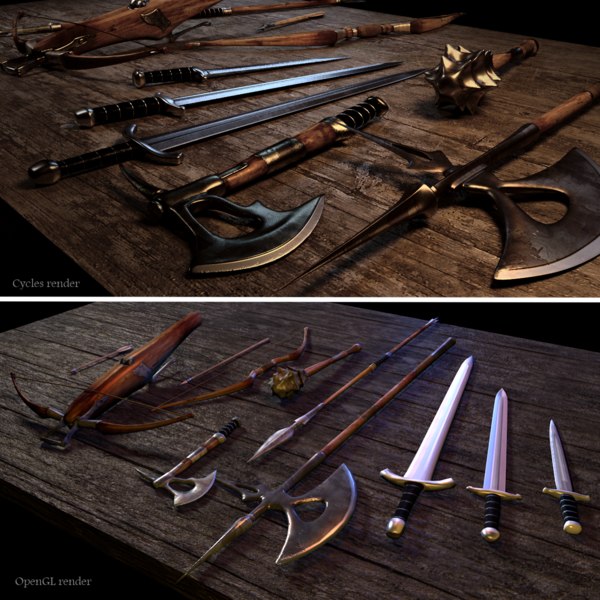
Maces
Now let us look at another important part of medieval weapons which is maces. Maces have a heavy, blunt head on the end of the shaft. The head of maces generally can be of iron, bronze steel, or stone. And the shaft is of either metal or wood. One of the best things about maces is that it is very economical as it does not require much money to make. Another thing about maces is that maces can be short or long.
In medieval times foot soldiers used maces but they could have also used them when they were mounting horses as it could have made a greater impact. The length of maces is generally 1.5 meters.
Goedendag
A Goedendag is a mixture of a club with a spear. The military of the Medieval Flanders in the 14th century had originally used the goedendag mainly during the Franco-Flemish War. The composition of a goedendag is a wooden shaft with a sharp metal spike at one end which is wider than the other end. The size of a goedendag is 3 feet to 5 feet with a diameter of two to four inches.
The guildsmen of Flanders’ wealthy cities had used goedendag effectively against the French knights at the Battle of the Golden Spurs in the early 14th century. The Flemish military constantly used the goedendag in battles in the medieval period.
Medieval Weapons and Armor
As medieval weapons were an important factor in medieval wars another important factor was armors. And an important part of armor was chain mail. Generally, the knights wore chain mail. A chain mail is protective clothing that consists of small metal rings. The mail is flexible and the knights wore it as a closely fitted tunic. A mail hood was also there to cover the head. Moreover, a separate helmet was always there to protect the head over the mail hood to protect the head from severe head injuries.
Medieval Weapons FAQs
What are some exotic medieval weapons?
Some exotic medieval weapons are:
- Khopesh
- Shotel
- Madu
- Shuriken
- Estoc
What are some deadliest medieval weapons?
Some deadliest medieval weapons are:
- Morningstar
- Stilleto
- Halberd
- Knightly Sword
- Crossbow
What are real medieval weapons?
- Spears, axes, maces
- Tribuchets, Guns
- Daggers
- Swords and Lances
- Crossbows and Longbows
What is the most brutal medieval weapon?
The medieval age is infamous for it brutal and gruesome weapons. However according to sources boiling oil was most brutal of all weapons. Armies often used boiling oil to injure or punish their enemies.

